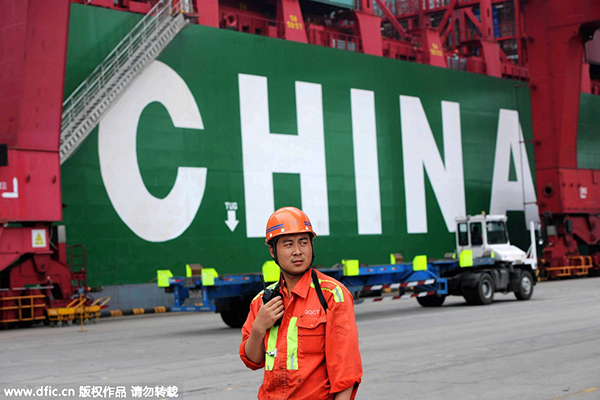 |
|
A stevedore works at Qingdao port in Shandong province, July 1, 2015. [Photo/IC] |
With statisticians reporting good news about many aspects of the Chinese economy, one can be almost certain it will encounter fewer storms than last year.
Industry, as a whole, saw total profit increase in January and February: The first time since June.
Also in January and February, investment in fixed assets, that in new factories and new houses, saw the first increase in 12 months, up 10.2 percent from the same period last year.
In March, surprising observers, merchandise exports reported an 18.7 percent increase year-on-year, to reach 1.05 trillion yuan ($193 billion).
Meanwhile, new shipbuilding orders increased in the first quarter, up 23.9 percent year on year, and the total consumption of both electricity and fuel was also up, indicating more business activity.
In addition the number of newly registered companies, most of which are privately held, rose by 10.7 percent year-on-year, exceeding 3 million.
And inflation, which can translate into some incentives to consumer spending, also showed a small rise.
Even more encouraging signs were seen in the latter half of March, officials say, indicating more elbow room for China to stay within the set range for its GDP growth for the year and for it to meet its job creation target.
The economy's slower growth will continue. No slowdown is not what China wants.
It needs a slowdown to restructure its economy, so it is more sustainable. It needs a slowdown to phase out unwanted production capacity and make more efficient use of its resources.
What is becoming clear is China's slowdown is a managed one; a slowdown whose speed and severity are under a level of control, and thus a slowdown that may translate into fewer pangs and jolts.
So although there is no obvious improvement in the GDP figure from the last quarter of 2015, the data from the first quarter of this year are seen by some Cabinet officials as signaling an "auspicious start".
Being able to manage a slowdown can be considered a first-stage success in China's transition. However, China must not be complacent. With greater economic stability becoming a reality, the government now needs to divert more energy to solving the long-term problems.
Many local governments are deeply indebted. Many cities still don't have differentiated development strategies. Many companies still have to learn how to compete in the global market. Many rich businesses and individuals have money to invest and still don't know where to invest. China has to work harder to forge ahead with reforms to resolve these issues.
